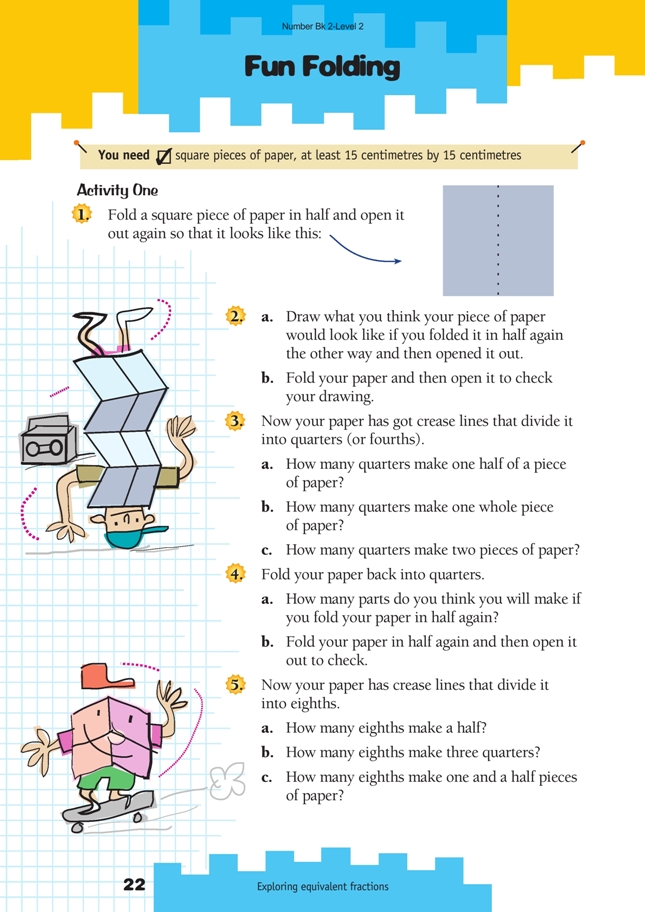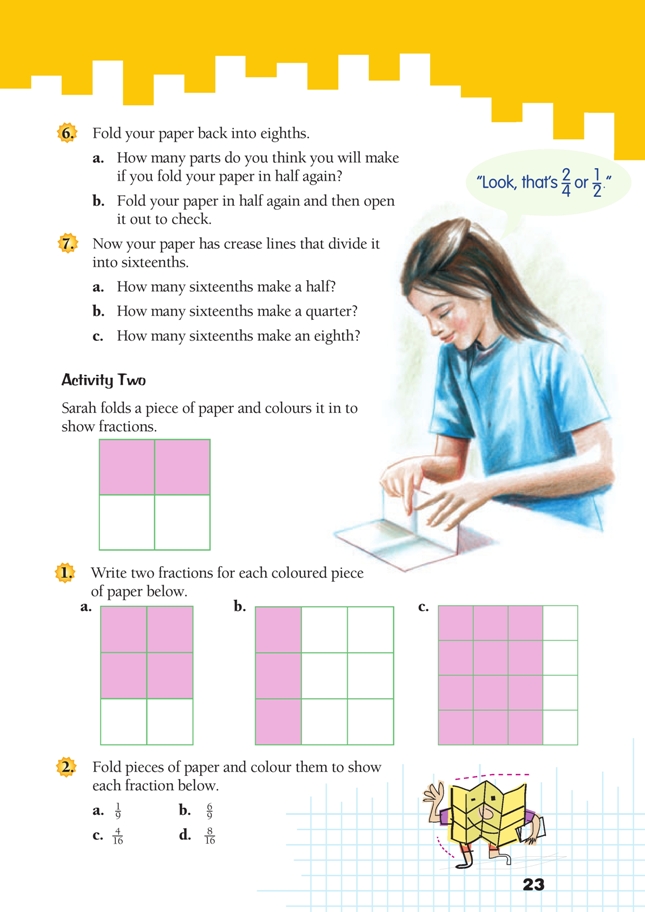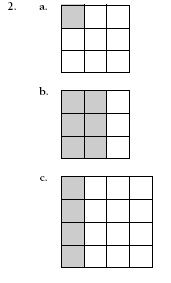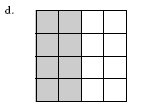This is a level 2 number activity from the Figure It Out series. It relates to Stage 5 of the Number Framework.
A PDF of the student activity is included.
Click on the image to enlarge it. Click again to close. Download PDF (186 KB)
explore equivalent fractions
Square pieces of paper, at least 15cm by 15cm
These activities are a practical way of exploring equivalent fractions of a region and fractions that are greater than one.
You could ask the students questions such as “What is happening to your paper each time you fold it?” and “What happens to the number of squares?” You could also use supermarket register tape instead of squares of paper and always fold it in the same direction.
Activity One
This is a useful activity to work through together with your group. Make sure that each student has their own piece of paper so that they get as much hands-on experience as possible. Record all the symbols for fractions as you go to reinforce their understanding of what the denominator and numerator represent. Highlight the equivalent fractions you discover as you are working. Have them predict what will be next: 1/2, 2/4, 4/8, … Can they use this pattern to help them predict what
will come next in the sequence: 3/4, 6/8, …?
For question 3c, have the students work with a partner to discover how many quarters there are in two pieces of paper and brainstorm how they might record this. Repeat this process for question 5c.
If each student has a piece of paper, there is an opportunity to extend this even further. For example, you could ask, “How many quarters are there in two pieces of paper … four pieces of paper … 10 pieces of paper?” and so on.
To introduce the students to the ideas they will encounter in the next activity, you could record equivalent fractions for the students as you go and ask them what is happening in the sequence. The students could make up a display of a series of squares of paper showing halves, with the half shaded on the first square, 2/4 on the second square, and then 4/8, and so on, to show that it’s an equivalent area of paper that’s shaded.
Shade half of each square and write the correct fraction above each: 1/2, 2/4, 4/8, and 8/16.

Activity Two
Start by identifying the fraction, using the total number of squares as the denominator and the total number of shaded squares as the numerator. Discuss with the students fractions that are equivalent to the one given, for example, 4/6 and 2/3.
Answers to Activities
Activity One
1. Practical activity
2. a.
b. Practical activity
3a. 2
b. 4
c. 8
4. a. 8
b. Practical activity
5. a. 4
b. 6
c. 12
6. a. 16
b. Practical activity
7. a. 8
b. 4
c. 2
Activity Two
1. a. 4/6, 2/3
b. 3/9, 1/3
c. 12/16, 6/8, 3/4




